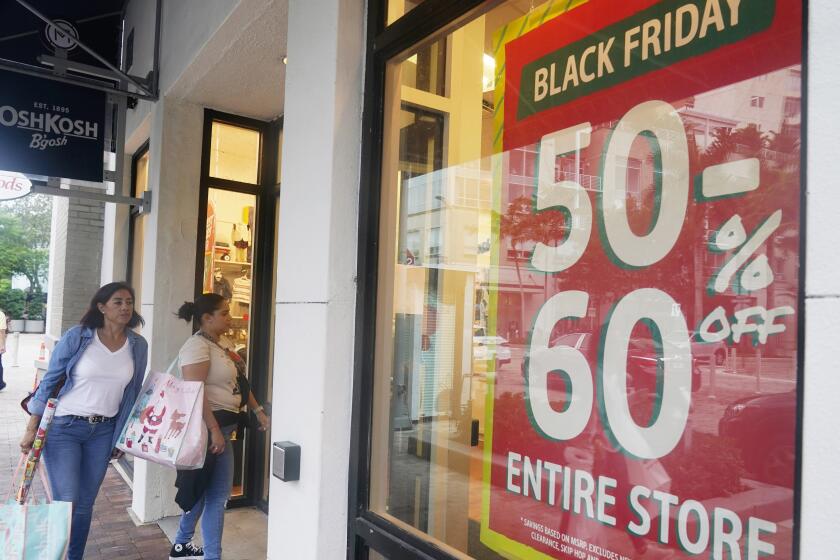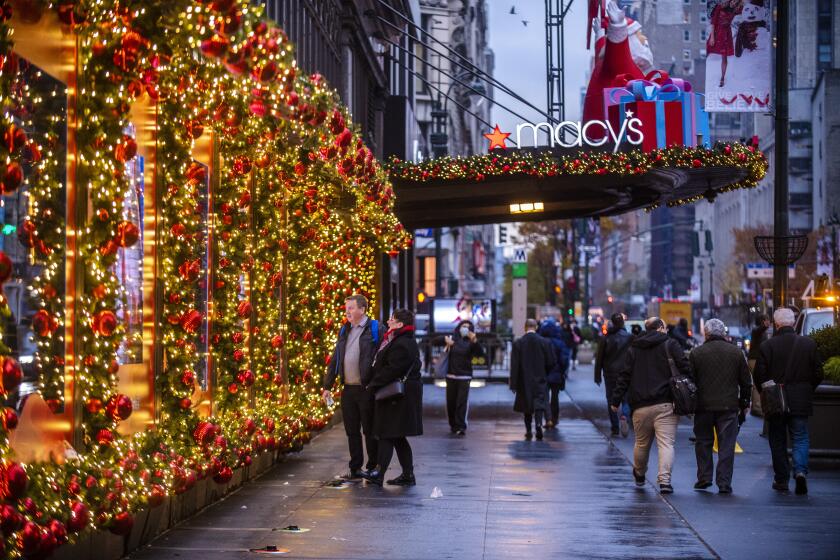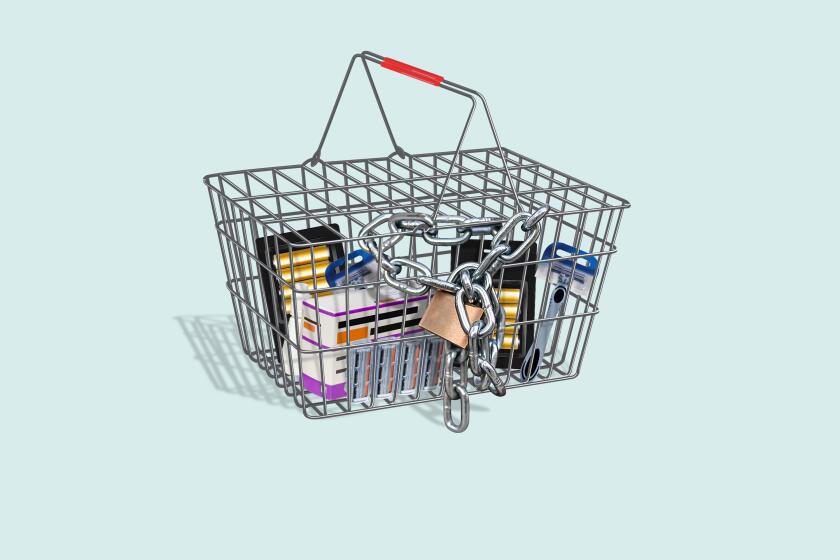Black Friday’s comeback highlights economic divide as inflation slams shoppers
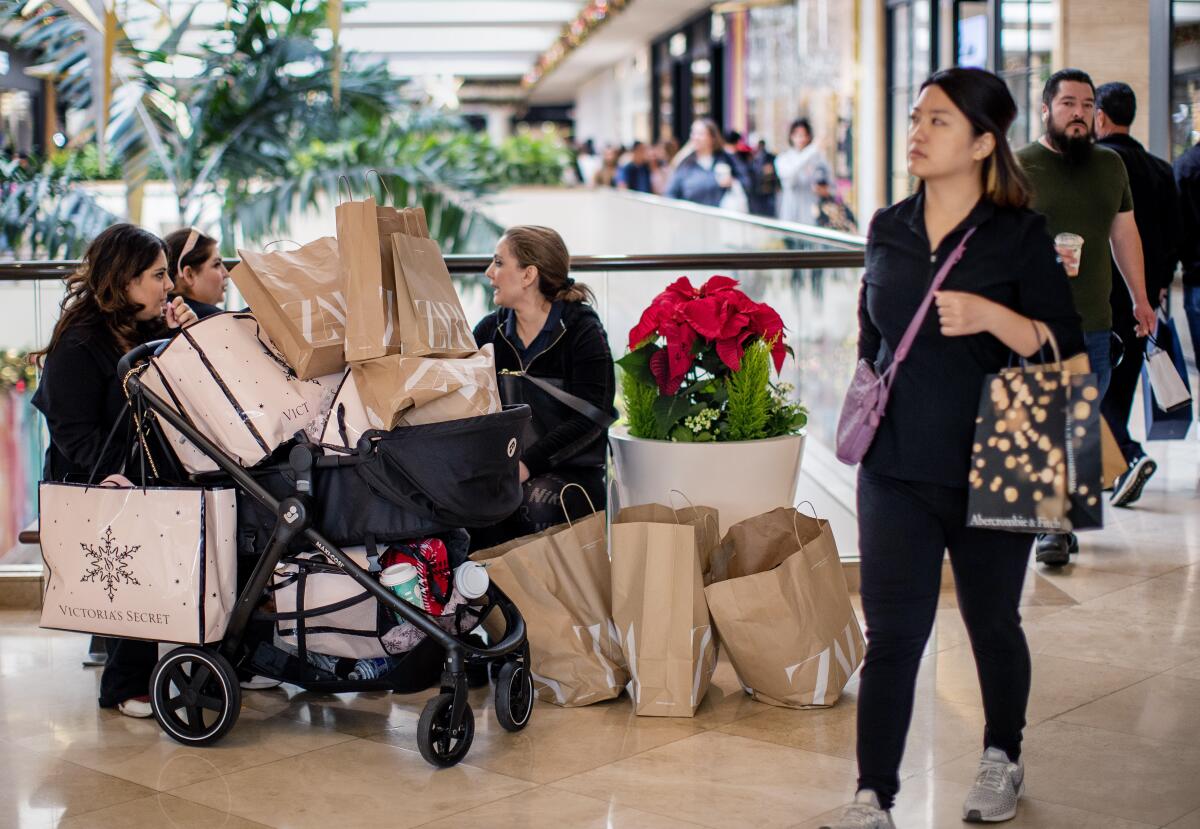
- Share via
Black Friday veteran Kevin Perez headed to the Burbank Walmart in the early morning hours, excited to jump into the shopping extravaganza after a two-year pandemic hiatus.
The 19-year-old Burbank resident has been standing in lines on the day after Thanksgiving since he was 12, and this year he was hoping to save about $100 on several Nintendo Switch games.
“We’re still taking precautions,” Perez said as he donned a disposable mask, “but we’re here.”
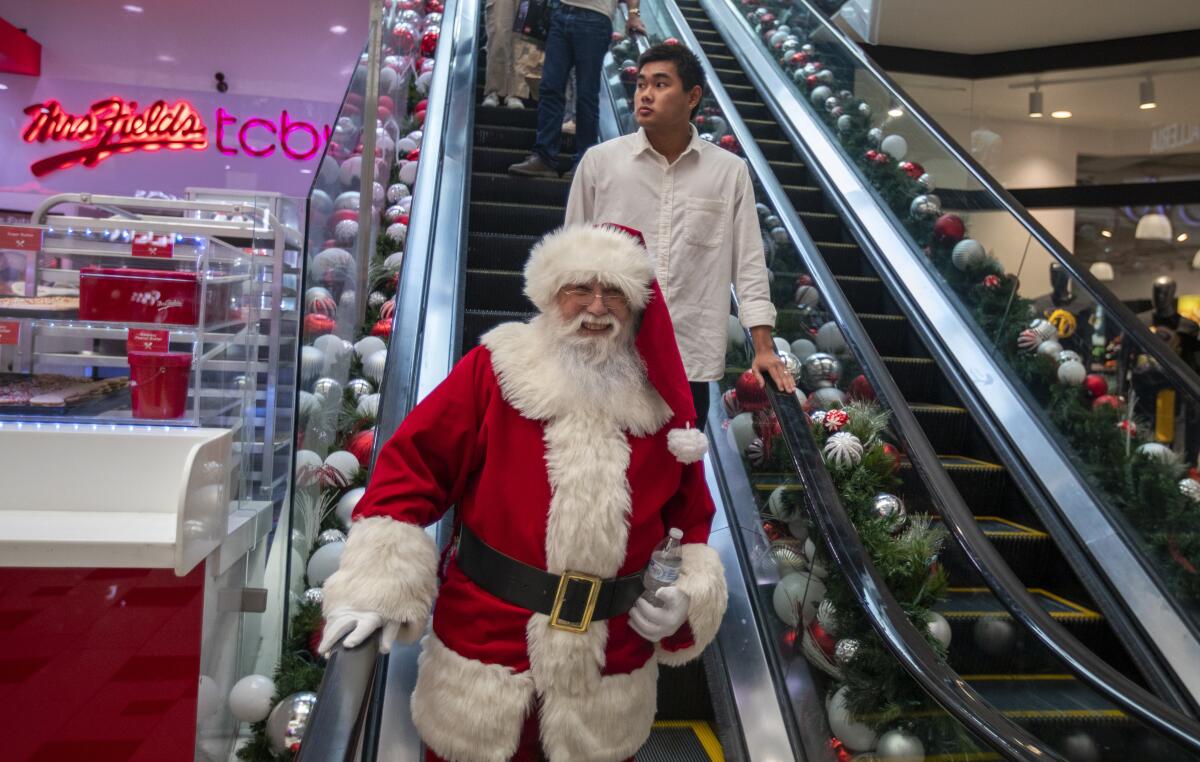
Black Friday is no longer the mall mob scene and bellwether of the gift-buying season it once was, knocked off its pedestal in the last decade by the torrid growth of e-commerce and ever-earlier discounting. The pandemic led to lackluster mall shopping and booming online sales in 2020 and 2021, when waves of the Delta and Omicron strains of COVID-19 kept holiday shoppers at home.
But in-person purchasing staged a comeback this Black Friday, a trend expected to continue during the rest of the winter spending season. For some people, hitting the stores — particularly after they’ve digested their turkey — is a family tradition they are embracing anew, consumer surveys show.
And financial hardship from months of wild inflation pushed shoppers to get out early, looking for bargains.
Citadel Outlets in the City of Commerce saw bustling crowds beginning Thursday night, when many other malls were closed, as eager shoppers jumped on deals.
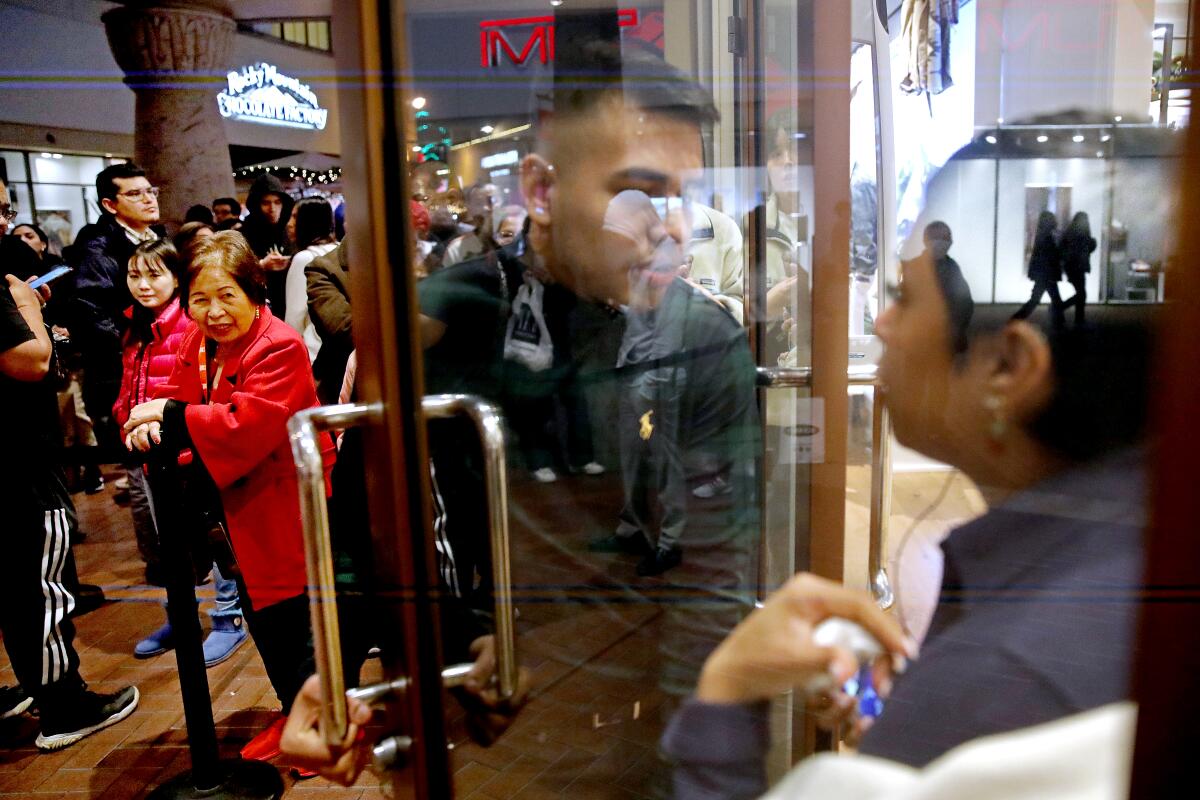
Estevan Flores and his family arrived at the Citadel Outlets at 6:30 a.m. Friday, hungry from skipping breakfast and ready to shop.
Flores, 19, drove to the popular Black Friday destination in a single car with his family of seven from Long Beach. After about five hours, the collapsible wagon they brought was filled with shopping bags, but they were still going strong. Flores said that he and his family have been saving up for months for their holiday presents.
“I saved a little bit at a time because I know I want to go after this day and go all out,” said Flores, who works at a fast-food restaurant. “And then Cyber Monday is another story.”
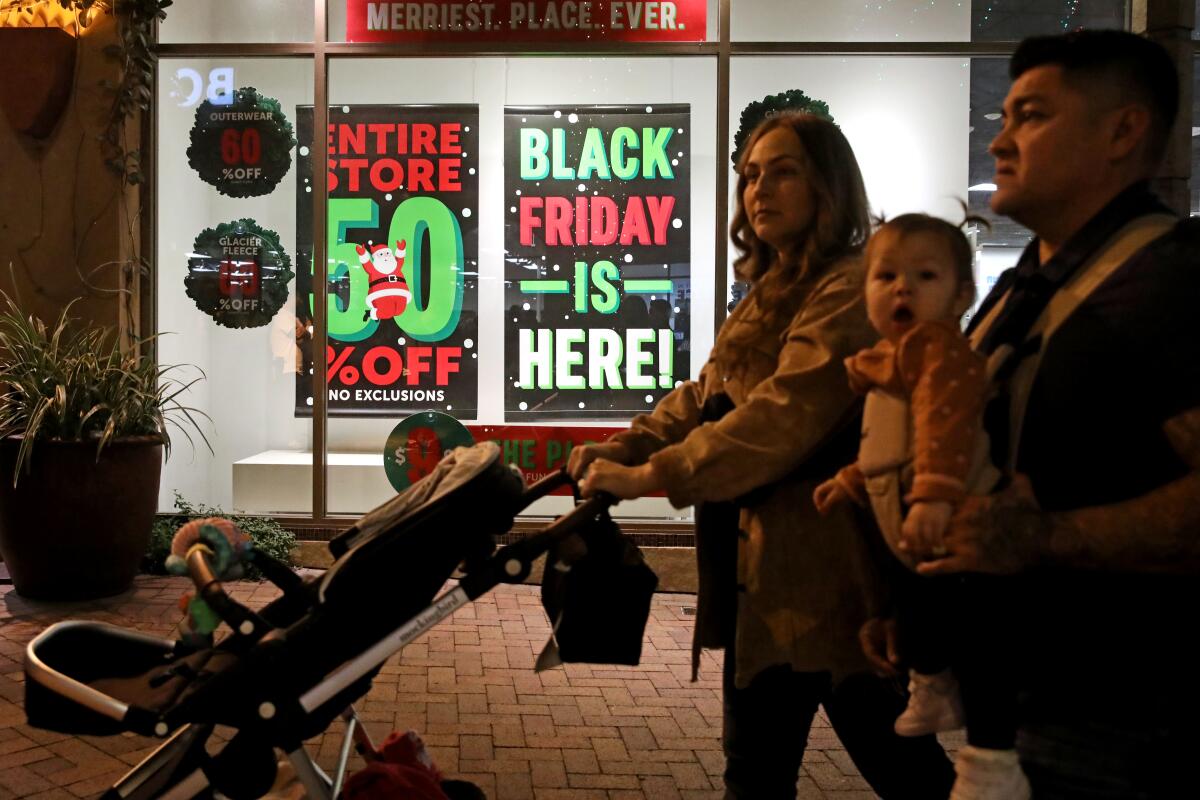
Despite busier stores on Friday, retail experts are predicting a slower overall holiday sales season, with shoppers tapping into savings, credit cards and home-equity loans to fund their annual spree.
All this matters because how freely shoppers spend is key not just to retailers’ profits but to the entire U.S. economy. Consumer spending on goods and services accounts for about two-thirds of U.S. economic activity.
And Americans are feeling squeezed by the soaring cost of nearly everything they buy as well as sharply higher interest rates.
Shoppers seeking big deals — and relief from soaring inflation — may be disappointed as many items end up costing more than last year even after discounts.
Consumer confidence fell in the Conference Board’s most recent survey, and consumers “appear to be rebalancing their budgets and priorities by reducing their gift-giving circles to help offset the higher costs of non-gift items, in particular food,” said Lynn Franco, the nonprofit group’s senior director of economic indicators.
Nationwide, shoppers plan to spend about $1,455 a person this year, about the same as last year, according to a Deloitte survey. However, that will net about nine gifts on average, down from 16 in 2021, Deloitte said. Toy inflation means shoppers should budget 15% more on playthings this year, Toy Insider recommended.
Merchants are having to work harder to get consumers to open their wallets, with big markdowns and other incentives.
Consumers are being offered some of the “best holiday discounts we’ve seen on record,” said Vivek Pandya, lead analyst at Adobe Digital Insights.
Retailers are trying to offload excess inventory as well as drum up excitement and growth over the holiday shopping season as Americans are having to pay more in other parts of their lives for items such as groceries, gas and housing, Pandya said.
But factoring in inflation, which is running at the highest level since the early 1980s, that discounted gadget may still cost more than it did last year.
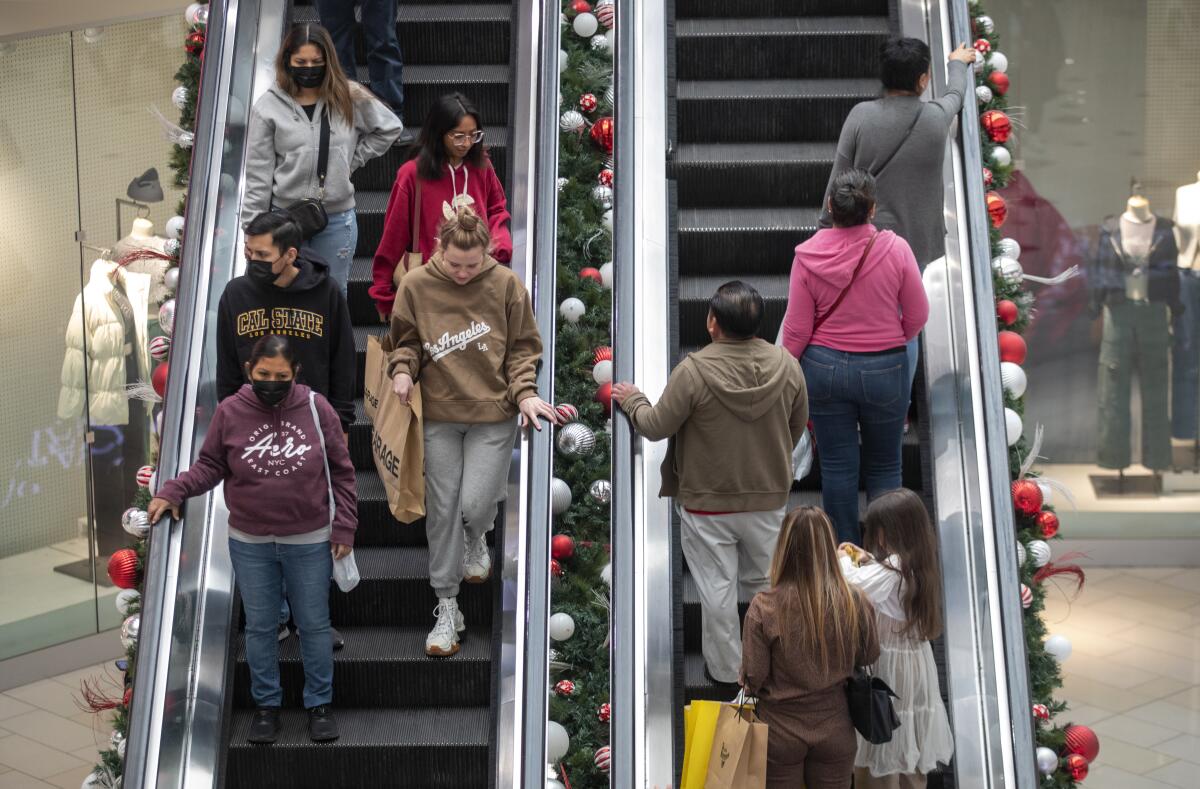
Liz Mora, who came to the Glendale Galleria with her 16-year-old daughter, wasn’t convinced the Black Friday specials were actually that special.
“I always shop sales, and the ones today aren’t that much better,” she said.
Deloitte retail consultant Summer Taylor, who monitored Friday crowds at the Galleria, said she saw healthy amounts of foot traffic comparable to pre-pandemic levels throughout the day and discounts that ranged from 20% to 80%, with the average about 25%.
“While the main destination for shoppers is likely to remain online retailing, so many people consider holiday shopping with friends and family to be part of their holiday tradition,” Taylor said.
Black Friday’s resurgence also underscored the nation’s financial divide. Well-off consumers were spending eagerly while middle-income and low-income people were digging for bargains after months of rising prices and economic uncertainty.

Ethel Hays, 78, a receptionist in San Francisco, stood outside an Old Navy store 10 minutes before it opened Friday with only $45 to spend on presents.
“I’m looking at these $5 things for the family because we’re so broke,” Hays said, looking into the window displays. “Flannel pants — you can get all different sizes and it’s only going to cost you about $25 or $30.”
Hays said her family has been struggling this holiday season. They couldn’t afford a star to top their small plastic Christmas tree, but she hopes to at least have some presents under the tree.
Holiday shoppers will see bargains. but many are trimming their spending plans, which might mean a bumpy season for retailers and the U.S. economy.
The atmosphere couldn’t have been more different at South Coast Plaza, a high-end Orange County shopping destination filled with brands such as Burberry and Dior.
Debbie Weems of Laguna Hills was there Friday afternoon tracking down items on her adult children’s wish lists, including Lululemon pants and turtlenecks for an upcoming family trip to Switzerland.
“It’s hard to believe we are in a recession — it looks like a normal year,” Weems said. (Economists haven’t yet decreed that the nation has entered a recession, but Federal Reserve meeting minutes released Wednesday revealed that staff economists told policymakers that the possibility of a U.S. recession in the next year has increased to nearly 50%.)
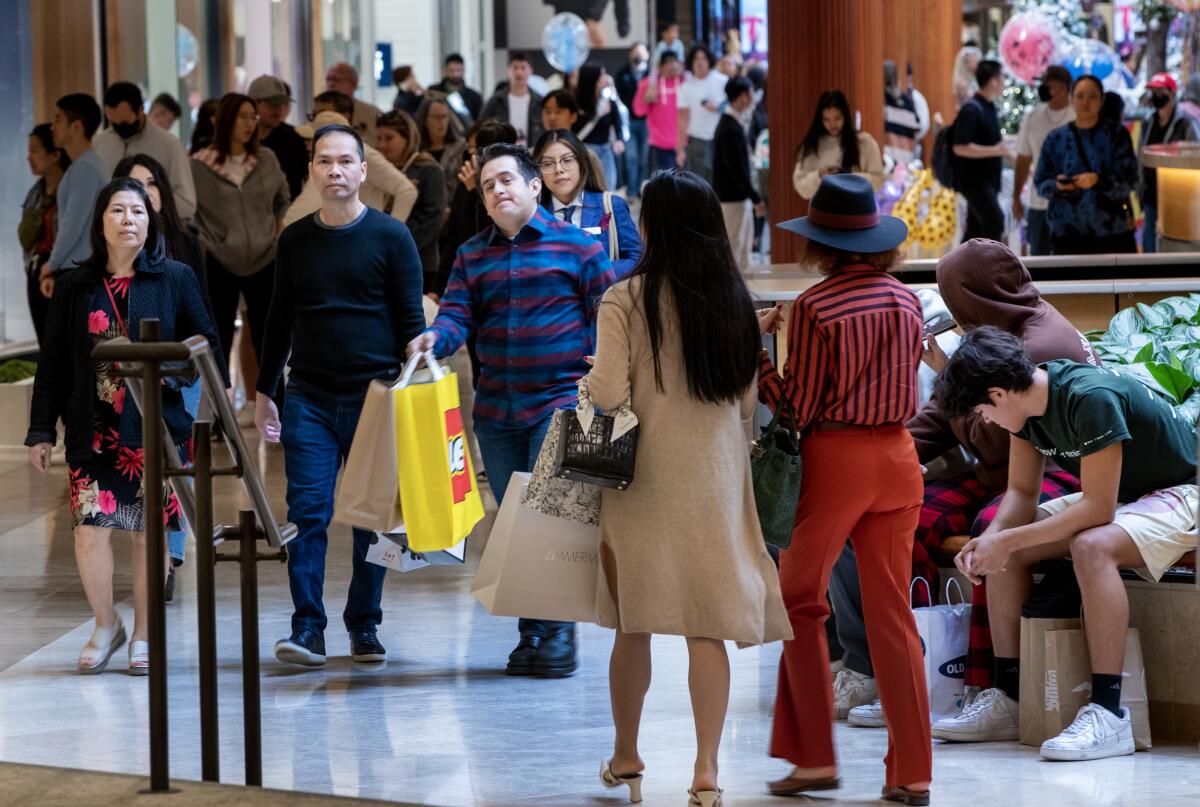
Spending online is predicted to surpass $209 billion this holiday season, compared with $205 billion last year, about 2.5% growth, according to Adobe’s holiday shopping trends report.
“That’s pretty remarkable, given the economic headwinds that many consumers have been facing,” Pandya said.
Online prices are down about 1%, year over year, on average, which means any growth is purely driven by demand rather than inflated prices, he said.
On Thanksgiving Day, consumers spent a record $5.29 billion online, up by 2.9% from last year, according to Adobe Analytics data. By 6 p.m. Eastern time Friday, consumers had spent $7.28 billion on Black Friday, with the final tally predicted to reach as high as $9.2 billion, which would set a record, Adobe said.
Most shopping still happens in brick-and-mortar stores, but that information trickles out more slowly. The National Retail Federation predicts holiday spending could reach $960.4 billion, with nearly three-quarters of the total at physical stores.
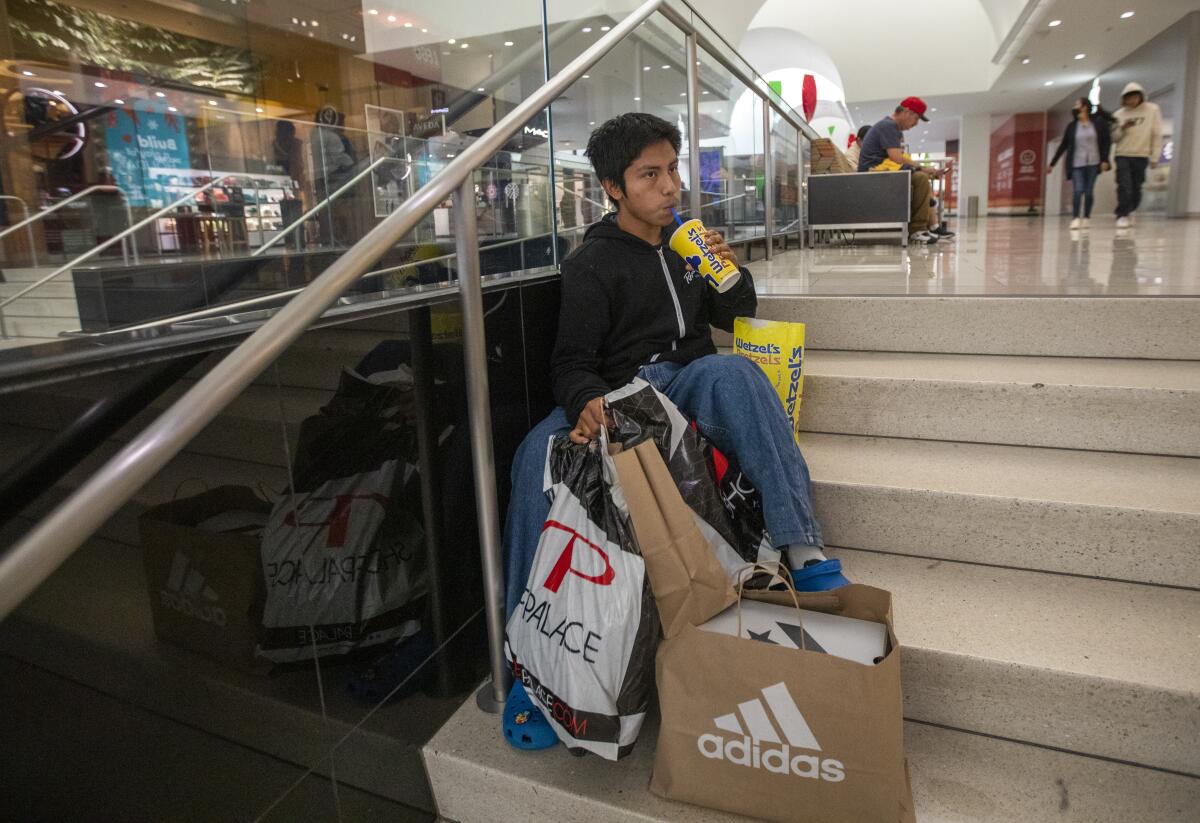
At the Glendale Galleria, shoppers returned to their pre-pandemic Black Friday tradition of lining up at stores in the predawn darkness.
Drugstores are locking up more products, frustrating shoppers. The Times surveyed stores and found vastly different approaches to preventing theft.
“We had hundreds of people in line right when we opened at 5 a.m. to get a coupon,” said J.C. Penney General Manager Brett Wolever, smiling broadly while he took in the traffic at his store. “This year definitely [feels] a little more traditional Black Friday.”
Wolever and his staff began prepping in September, hiring and training to make sure the store was ready.
“I don’t think it ever gets easier,” said Wolever, who is participating in his fifth Black Friday as general manager and his 26th as a retail worker. “It’s always a different dynamic, a different challenge, whether it’s harder hiring or if it’s more product coming in.”
Other shopping destinations got off to a later start, but shoppers managed to get their spend on soon after doors opened. Major retail centers around the nation appeared to be bustling with shoppers as the day wore on, although the crowd size varied widely.
Foot traffic was “significantly larger” on Black Friday compared with the previous two years because shoppers feel more comfortable in crowds, Macy’s Chief Executive Jeff Gennette told the Associated Press at the chain’s flagship Herald Square store in Manhattan. There, discounts included 60% off fashion jewelry and 50% off select shoes.
Foreign tourists were helping plump up the Black Friday mall crowds in Southern California, New York and other major destinations. The lifting of COVID-19 restrictions has brought a resurgence of international travelers primed to participate in a time-honored American tradition.
Citadel Outlets General Manager Michael de Leon said there were 10 buses of visitors from Thailand last weekend and several groups from Australia and Vietnam on Friday.
Inflation may explain an increase in gift card purchase plans this holiday season. The average planned holiday spend on gift cards increased 7% nationwide from last year, according to the Deloitte survey.
The big question for merchants is whether this markdown-heavy holiday season will be profitable.
With retailers having to spend more on labor and to stock their shelves, “what they fear is that their own cost increases aren’t going to match the sales increases that they’re going to put out,” said Neil Saunders, managing director at GlobalData Retail.
For many shoppers, holiday gifts are a priority and a family morale booster, even if it means scrimping in other areas.
Consuela Hernandez was smiling as she left the Compton Walmart with a 70-inch Vizio TV, which was, she said, a gift for the whole family that members pitched in for. The cost: $1,100, a bargain compared with similar big-screen TVs that cost two to three times as much, she said.
It hadn’t been a great year for her husband and three children, so “we wanted to do something special,” said Hernandez, 54. “We’re tired of watching soccer on our little old screens.”
Times staff writer Kenya Romero contributed to this story. Arredondo reported from San Francisco.
More to Read
Inside the business of entertainment
The Wide Shot brings you news, analysis and insights on everything from streaming wars to production — and what it all means for the future.
You may occasionally receive promotional content from the Los Angeles Times.
